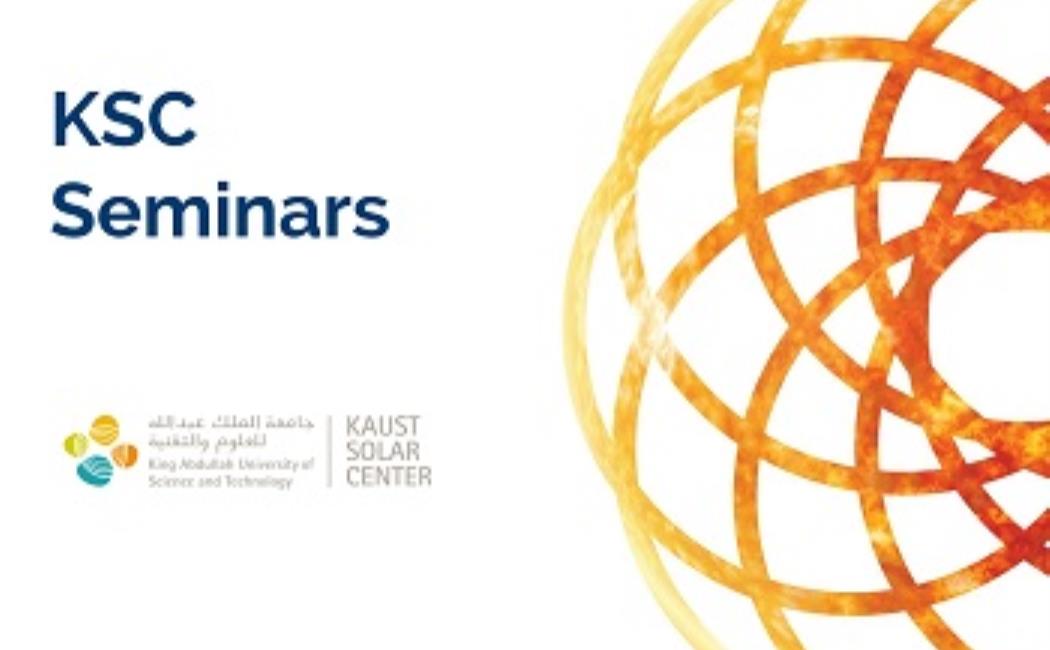
Speaker: Prof. Safa Shoaee and Prof. Dieter Neher
Date & Time: Tuesday 30th March, 2021 at 2:00 pm
Zoom meeting: https://kaust.zoom.us/j/95343776254
Abstract:
Organic solar cells (OSCs) are currently experiencing a second golden age thanks to the development of novel non-fullerene acceptors (NFAs).1 The blend of the donor polymer PM6 with the NFA acceptor Y6 has become the fruit fly of research on NFA-based solar cells.2 This is because of the high efficiency (>15 %) of single junction PM6:Y6 solar cells, which has now been reproducibly achieved in many labs around the world.
This talk summarizes our recent work on the pathways for free charge generation and recombination. By investigating photocurrent generation as a function of field, temperature and excitation energy, we find that that free charge generation is essentially barrierless with near-unity efficiency, regardless of excitation energy.3 Theoretical modelling taking into account the high crystallinity of the Y6 acceptor lead us to propose that CT state dissociation is assisted by the electrostatic interfacial field which for Y6 is large enough to compensate the Coulomb dissociation barrier. These exciting results asked for detailed knowledge about the states and energies which are involved in charge generation and recombination. It has, indeed, been proposed that NFA-based solar cells benefit from the high radiative efficiency of the acceptor molecules. We show that the radiative recombination of free charges in the PM6:Y6 blend proceeds almost entirely through the re-occupation and decay of the Y6 singlet, but that this pathway contributes to less than 1 % of the total recombination current.4 As such, the open-circuit voltage of the PM6:Y6 blend is almost entirely determined by the energetics and kinetics of the charge transfer (CT) state, irrespective of the position and emission properties of the singlet state.
Furthermore, we have studied what limits the VOC and the FF of PM6:Y6 device. Using electro-modulated and steady state photoinduced absorption spectroscopy we identify and quantify losses from surface recombination and bulk recombination by evaluating the quasi-Fermi level splitting (QFLS) of a device and film. We find that suppressing the non-radiative recombination of the CT states in the active layer is the key to enhancing the FF.5,6 The fill-factor of transport-limited solar cells is affected by material and device-specific parameters, whose combination is represented in terms of the established figures of merit, θ and α; which are closely related to the long-range carrier drift and diffusion lenths. Using a simple approach, we show drift length in PM6:Y6 and most systems exceeds that of the junction thickness; thereby not limiting the photocurrent at Jsc. On the other hand, the diffusion length in PM6:Y6 and other organic semiconductors is smaller than the width of the active layer, thereby limiting the FF.7 When ldif approaches d – due to high mobility or reduced recombination - the transition to a Shockley-type solar cell occurs and FF around 80% can be obtained.
[1] M.A. Green, E.D. Dunlop, J. Hohl-Ebinger, M. Yoshita, N. Kopidakis, and X. Hao, Prog. Photovoltaics Res. Appl. 28, 629 (2020).
[2] J. Yuan, Y. Zhang, L. Zhou, G. Zhang, H.-L. Yip, T.-K. Lau, X. Lu, C. Zhu, H. Peng, P.A. Johnson, M. Leclerc, Y. Cao, J. Ulanski, Y. Li, and Y. Zou, Joule 3, 1140 (2019).
[3] L. Perdigón‐Toro, H. Zhang, A. Markina, J. Yuan, S.M. Hosseini, C.M. Wolff, G. Zuo, M. Stolterfoht, Y. Zou, F. Gao, D. Andrienko, S. Shoaee, and D. Neher, Adv. Mater. 32, 1906763 (2020).
[4] L. Perdigón-Toro, L.Q. Phuong, S. Zeiske, K. Vandewal, A. Armin, S. Shoaee, and D. Neher, ACS Energy Lett. 6, 557 (2021).
[5] L. Q. Phuong, S. M. Hosseini, O. J. Sandberg, Y. Zou, H. Y. Woo, D. Neher, S. Shoaee, Solar Cells. Sol. RRL. 5, 2000649 (2020).
[6] S.M. Hosseini, N. Tokmoldin, Y. W. Lee, Y. Zou, H. Young, D. Neher, S. Shoaee, Sol. RRL. 4, 2000498 (2020).
[7] N. Tokmoldin, S. M. Hosseini, M. Raoufi, L. Q. Phuong, O. Sandberg, H. Guan, Y. Zou, D. Neher, S. Shoaee, J. Mater. Chem. A. 8, 7854 (2020)
Bio:
Safa Shoaee is an associate professor of Optoelectronics of Disordered Semiconductors at the University of Potsdam, Germany. Her research is focused on the fundamental photophysics and opto‐electronics of NFA and thick junction organic solar cells; the working principles and loss‐mechanisms. She obtained her Honors degrees in Physics from the University of Manchester and her Ph.D. in Physical Chemistry from Imperial College London. She worked at Imperial College London, National Physical Laboratory and University of Queensland before moving to University of Potsdam as a Sofja Kovalevskaja laureate.
Dieter Neher is a full professor of Soft Matter Physics and Optoelectronics at the University of Potsdam, Germany. He received his Diploma in Physics and his PhD in Chemical Physics at the Johannes Gutenberg University in Mainz, Germany. He worked as a postdoctoral research fellow at the Optical Science Center in Tuscon and the CREOL in Orlando, US. His current research focusses on the understanding and improvement of the electrical and optoelectronic properties of organic conjugated materials, hybrid organic/inorganic systems and organometallic perovskite semiconductors, and the implementation of such materials into highly efficient devices.